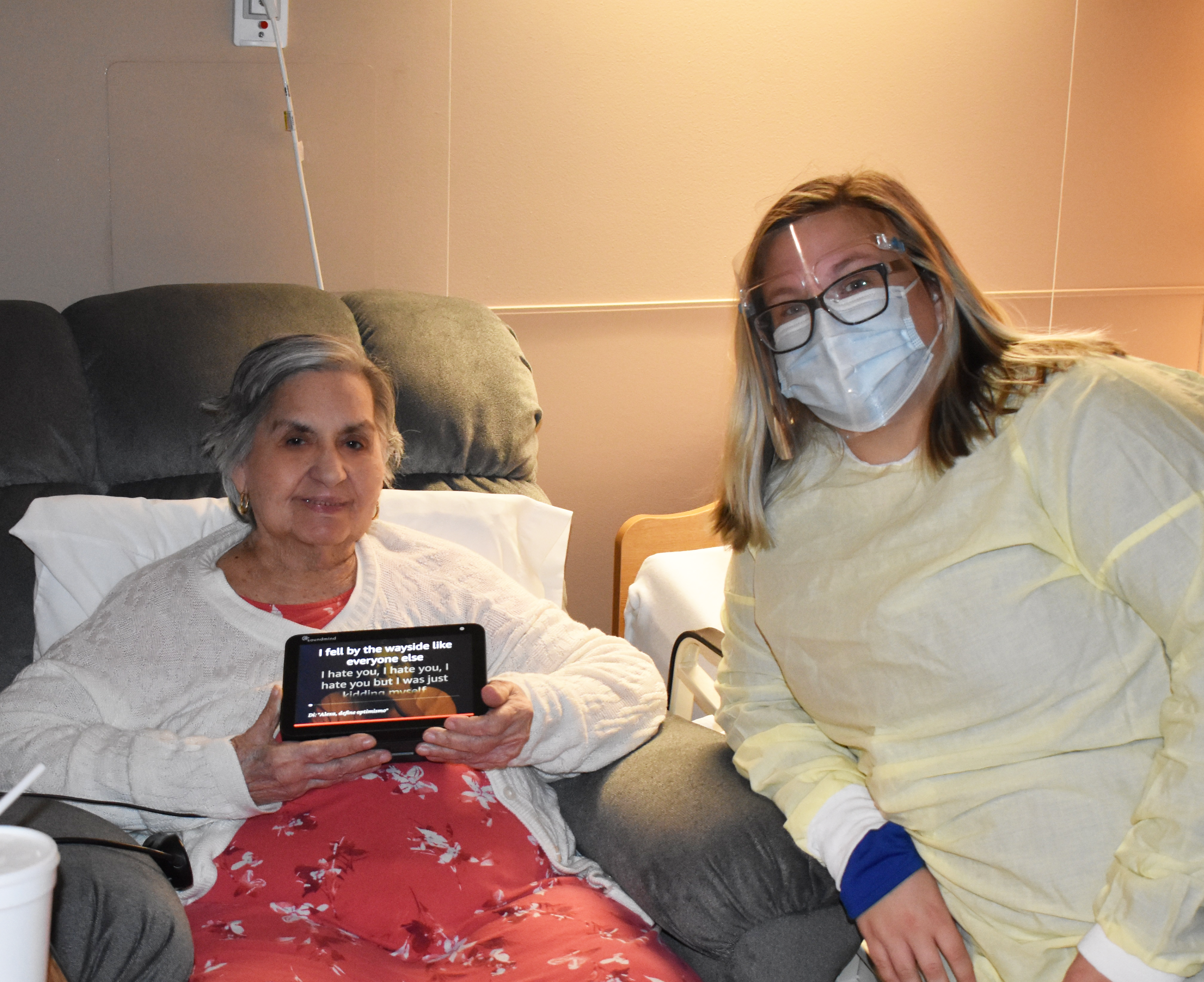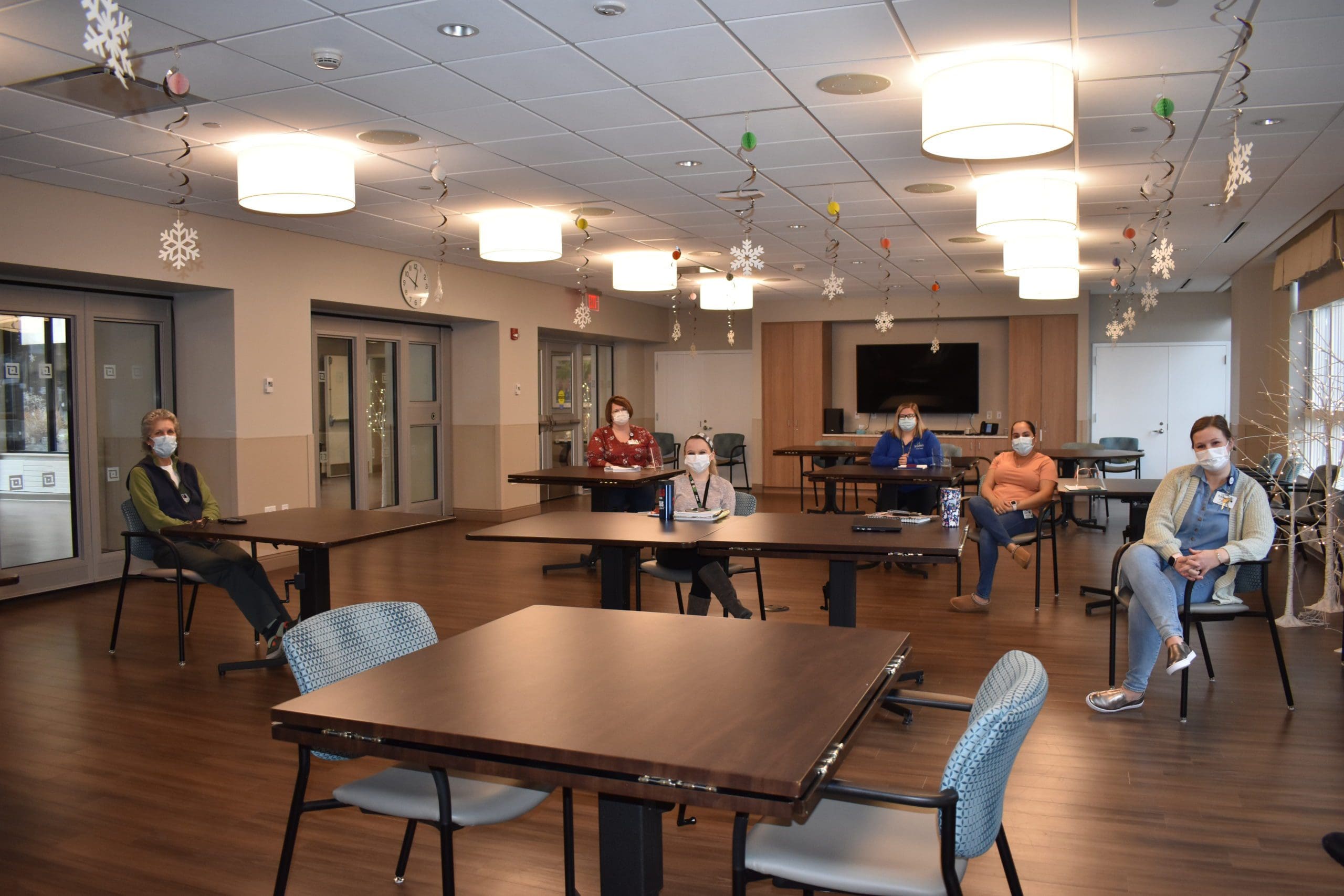St. John’s Social Workers Strong Among Essential Workforce
Among the workforce groups most impacted during the COVID-19 pandemic, but perhaps, one that is not as well recognized by the general community for the environmental risk of their workplaces; mental health toll on their collective well-being; and resulting changes in job scope over the past 12 months; is that of social workers. March is National Social Work Month and the theme for 2021, as rightfully identified by the National Association of Social Workers, is “Social Workers are Essential.”
 There are almost 700,000 social workers in the United States. This group of dedicated and tenacious professionals, according to an article published by Social Work of the National Association of Social Workers Press, entitled “Voices from the Front Lines: Social Workers Confront the COVID-19 Pandemic,” is “building the bridge as we cross it” and “bearing witness to the struggles of the most vulnerable and isolated in our society.”
There are almost 700,000 social workers in the United States. This group of dedicated and tenacious professionals, according to an article published by Social Work of the National Association of Social Workers Press, entitled “Voices from the Front Lines: Social Workers Confront the COVID-19 Pandemic,” is “building the bridge as we cross it” and “bearing witness to the struggles of the most vulnerable and isolated in our society.”
The Social Workers’ Perspective
In recognition of National Social Work Month, we took a rare opportunity to provide “care” to our own team of social workers at St. John’s Home, who normally are not able to even able to sit down for a moment during the work day to recharge from their demanding role of providing support to the more than 350 residents and their families (as well as their fellow colleagues in need). We are fortunate to be able to celebrate them and hear their stories of how the pandemic has impacted them over the past year. In this reflective tribute piece, we share some of the “voices from the front line” from our own group of essential social workers.
Their years of experience range from a handful of years out of college to decades of time in the workplace; however, the reasons why they went into the field of social work are common.
“For me, wanting to help people. . .wanting to help people get to their goals. And in long-term care, it’s reminding them that you can still have a full life, you can still have meaningful engagement, you can still do new things,” says Stacey Hall, St. John’s Direct Care Partner for Social Work.
For St. John’s Social Worker Dezzerey Rodriguez, the motivation was personal in nature, “wanting to help the people that are not being helped, having a voice for them. . .I have an aunt with intellectual  disabilities and she helped raise me in a way.” According to Rodriguez, she was able to see the opportunities her aunt did not have and wanted to work to provide opportunities for people that were disadvantaged.
disabilities and she helped raise me in a way.” According to Rodriguez, she was able to see the opportunities her aunt did not have and wanted to work to provide opportunities for people that were disadvantaged.
St. John’s Social Worker Kelly Stenglein learned about the career firsthand when her grandmother was in care at St. John’s. “I got to see how the social worker was working with her (my grandmother) and advocating for her, and I just loved that; so I did my internship here and now here I am,” said Stenglein with a smile.
Providing Hope to Families
Doing their work “with a smile” and being the beacon of hope that both residents and colleagues alike have needed during the pandemic, has not been easy. Hall says that it has been emotionally exhausting on the team. “We are normally the people that have provided others with support and during this time, we have had to do check-ins with each other because I am worried about all of the social workers, of how much they take on of the residents’ emotions, the families’ emotions, the staff’s emotions,” said Hall, who is especially concerned about burnout for this group, for whom normally there has not been a risk (because of their skill sets) like in other professions.
One of the biggest reasons for this risk of burnout has likely been the void the social work team has had to fill in residents not being able to have their family members visit due to the COVID-19 restrictions in place in nursing homes. “They can’t hug, they can’t touch. It’s so hard for them,” says St. John’s Social Worker Kelsey Gendron, who notes the toll this unmet human need has taken on the residents and their families. “You see your residents declining and there is nothing you can do.”
For St. John’s Socal Worker Judy Peace, the difference has been monumental. “I miss the families being here. It feels kind of like a ghost town sometimes.”
In their role as the communication bridge between residents and families, they have been compelled to keep spirits lifted and focus on the future. “Reassuring people who have to choose long-term care that even though visitation is restricted right now, we have to be their hope that there is going to be a change some time soon,” says St. John’s Social Worker Carlie Bartleson.
The team has also seen the scope of their job change during the pandemic. “We have become closer, like family, with our having more one-to-one time with residents, and having more conversations with their families,” says Stenglein, who notes some of the traditional tasks done by family members have fallen to their team such as unpacking the rooms and helping new residents to settle in; facilitating communication like video chats and window visits between familiy members and residents; and providing increased emotional engagement for those who are not able to leave their rooms.
Rodriguez says that she makes an extra point to bring her dog Bailey around to the residents and to talk about her children with them because “you can see their faces light up” and she knows that is is difficult for them in that they are not able to see their own grandchildren.
After all the reflection on the past year, the team remains optimistic. Says Hall, “It’s holding out hope that things will get better, and we’ll get back to visitation, we’ll get back to large group programs that people love, and we’ll get back to doing the Lilac Festival and all those things that make St. John’s special.”
